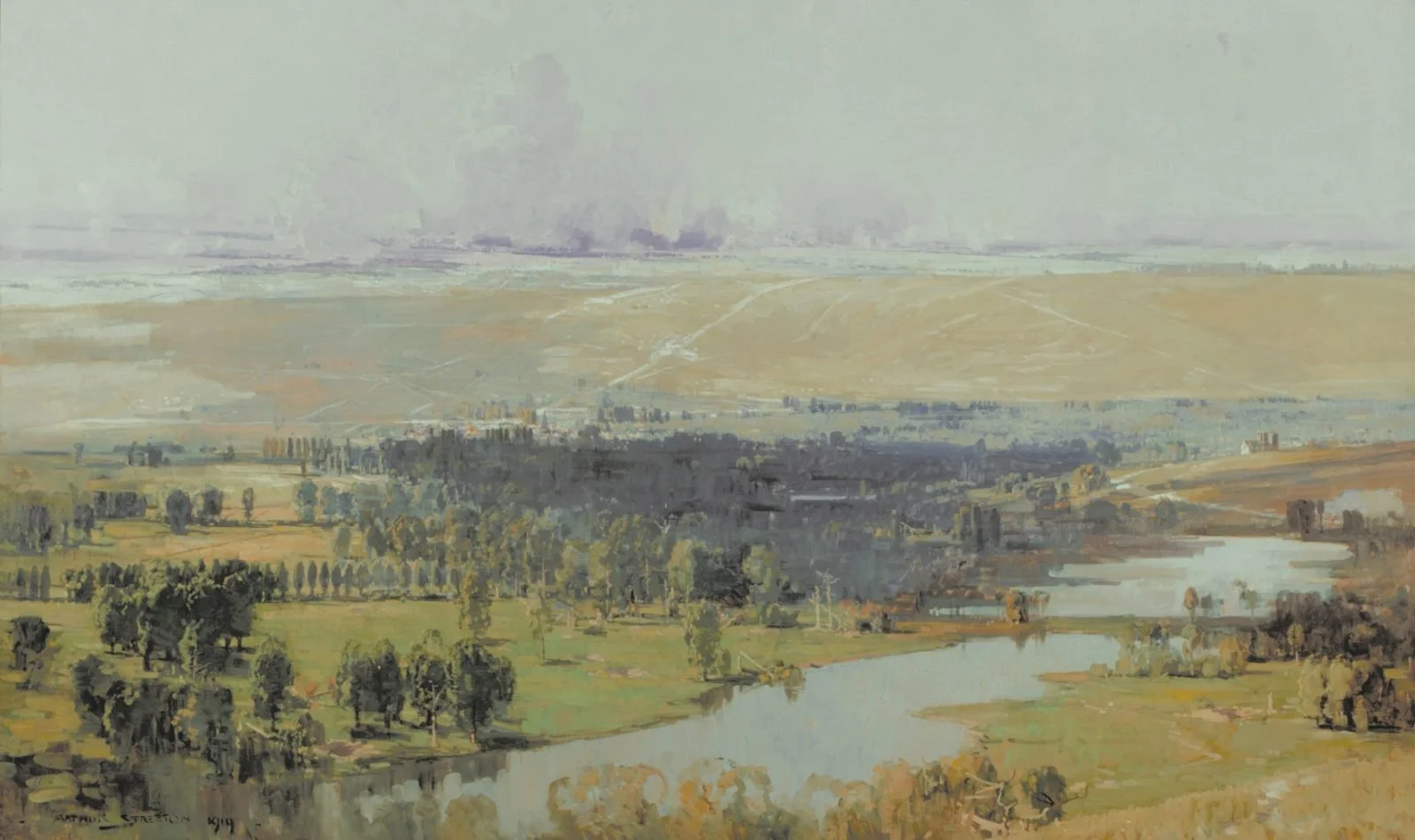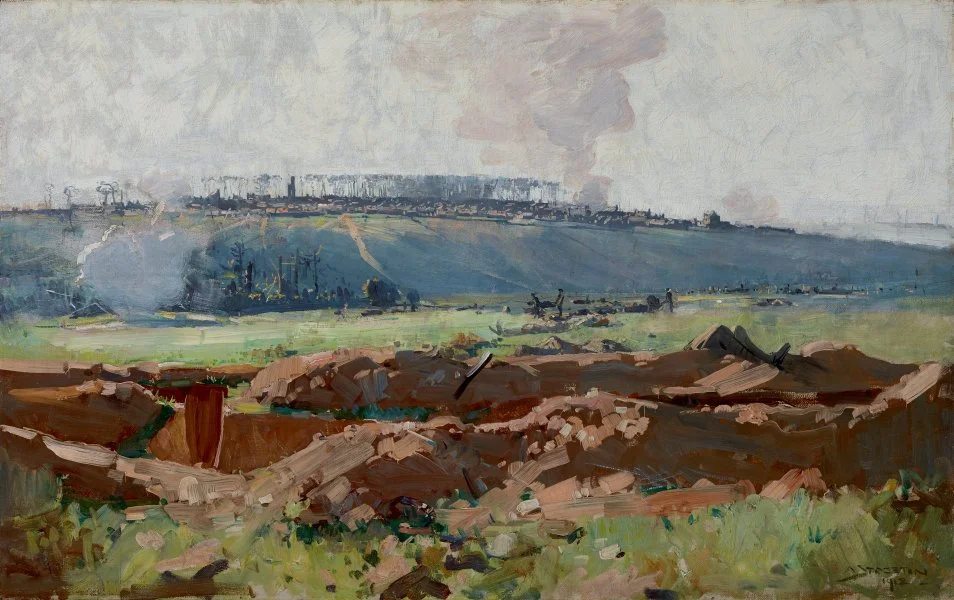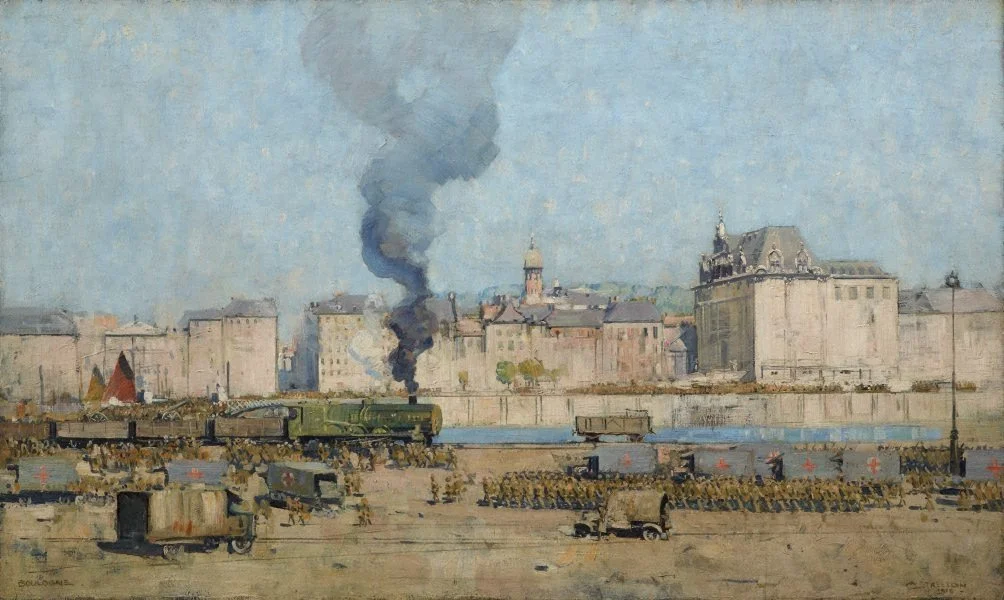Arthur Streeton
Arthur Streeton was an Australian landscape painter and war artist who gained prominence for his stunning depictions of the Australian landscape and his contributions to capturing the experiences of Australian soldiers during World War One. He was born on April 8, 1867, in Duneed, Victoria, Australia, and passed away on September 1, 1943, in Olinda, Victoria.
Streeton began his artistic journey at a young age and received formal training at the National Gallery of Victoria Art School. He was influenced by the Heidelberg School, an Australian art movement that emphasized capturing the unique light, color, and beauty of the Australian landscape. Streeton's early works often depicted rural scenes, portraying the sweeping vistas, bushland, and waterways of the Australian countryside.
When World War One broke out, Streeton volunteered to serve as a war artist for the Australian government. He was appointed as an official war artist in 1918, and his role was to document the war efforts and the experiences of Australian soldiers on the Western Front in France and Belgium.
Streeton's war paintings captured the harsh realities and human stories of the war. He portrayed the destruction caused by artillery barrages, the desolate landscapes scarred by trenches, and the resilience and camaraderie of the Australian troops. His works offered a unique perspective, showcasing the Australian soldiers' bravery and their contributions to the war effort.
Villers-Bretonneux
Re-capture of Villers-Bretonneux, 24th and 25th April, 1918
Villers Bretonneux on 25 April 1918


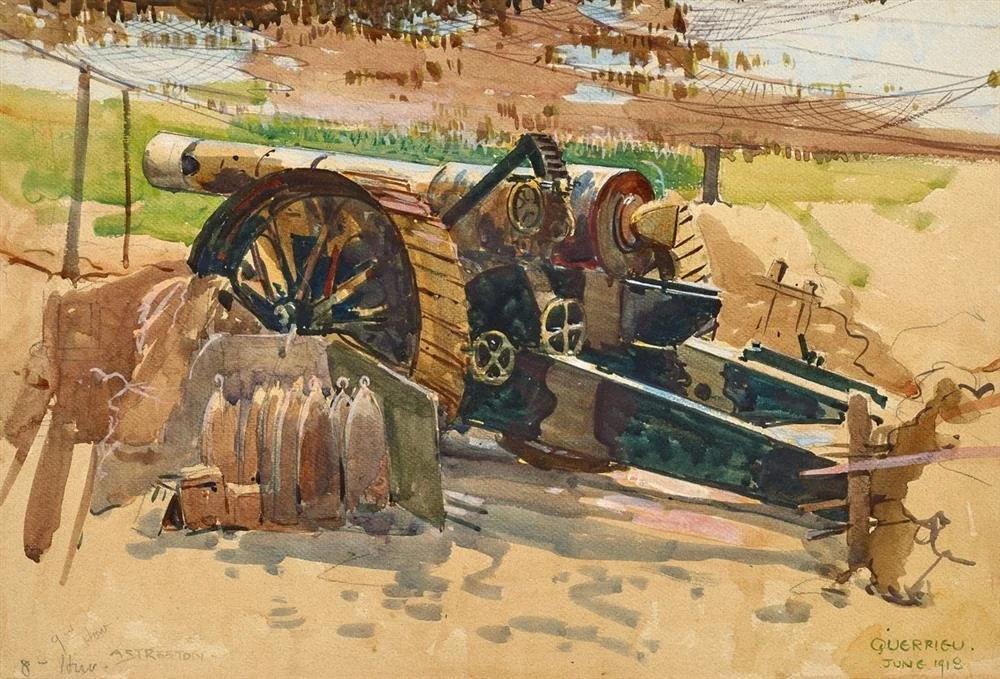

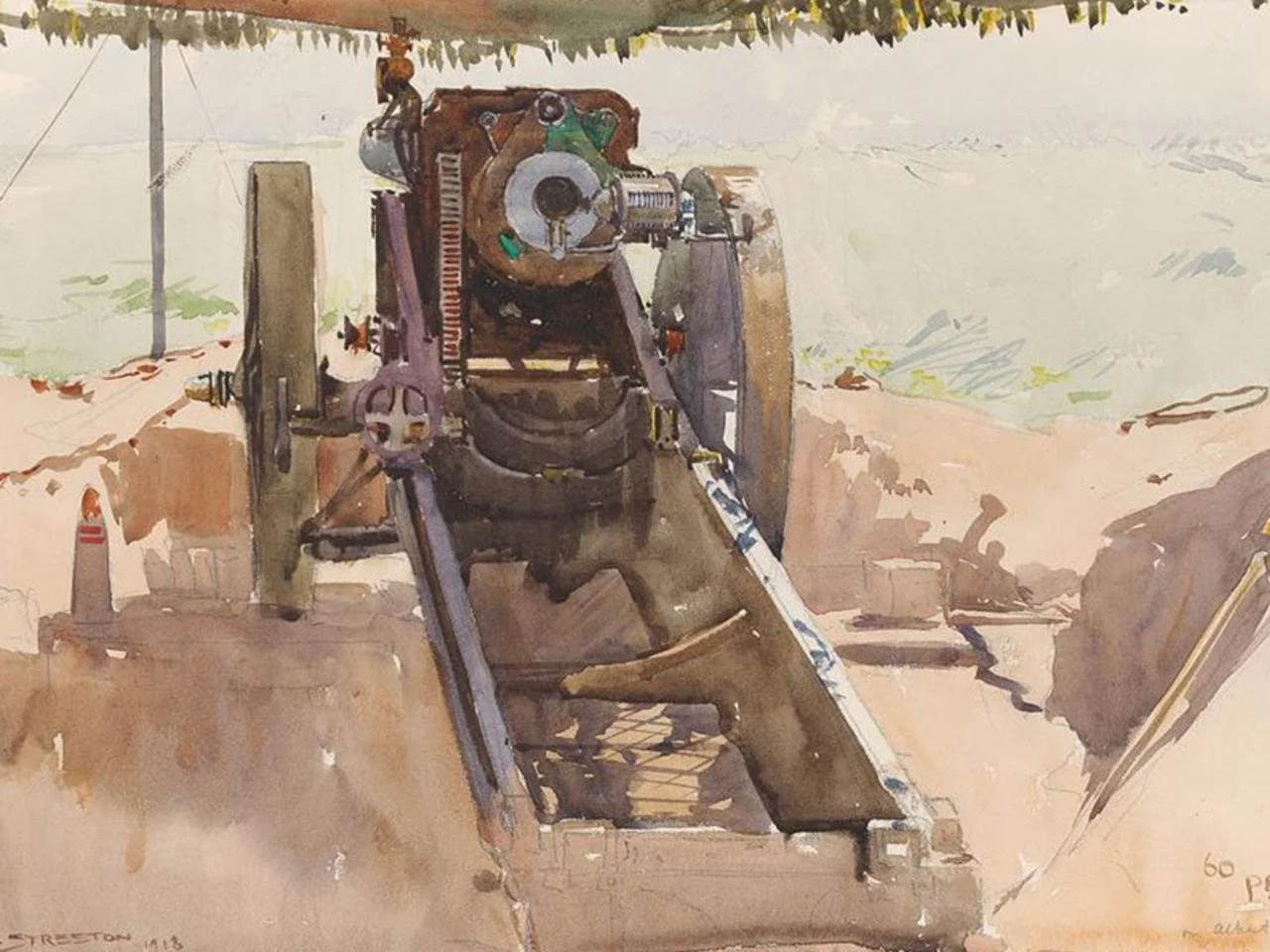




Streeton's paintings not only depicted the horrors of war but also highlighted the beauty and resilience of the human spirit. He captured moments of camaraderie, such as soldiers resting or engaging in leisure activities amidst the hardships of war. His ability to portray both the physical landscapes and the human emotions made his works powerful and evocative.
Arthur Streeton at the camp at Mosman, c1892-3, by unknown photographer. Source: State Library of NSW, P1/1707
After the war, Streeton continued to paint and exhibit his artworks. He played a significant role in the development of Australian art and was one of the leading figures in the movement for Australian Impressionism. Streeton's contributions as a war artist helped shape the narrative of Australia's involvement in World War One and provided a lasting visual record of the experiences of Australian soldiers.
Today, Arthur Streeton's works can be found in major galleries and collections in Australia and around the world. His paintings continue to be celebrated for their artistic merit and historical significance, showcasing the talent and dedication of this influential Australian artist.
Arthur Streeton, an Australian artist, made significant contributions as a war artist during World War One. Streeton's ability to capture light, atmosphere, and emotion in his artwork continues to resonate and offers a unique perspective on this significant period in history.
Arthur Streeton, his son Oliver and wife in London, c1916, by Lena Connell. Source: Australian War Memorial, PO3451_004
Arthur Streeton, c1932, by Jack Cato. Source: Pictures collection, State Library of Victoria, H98.150_80


